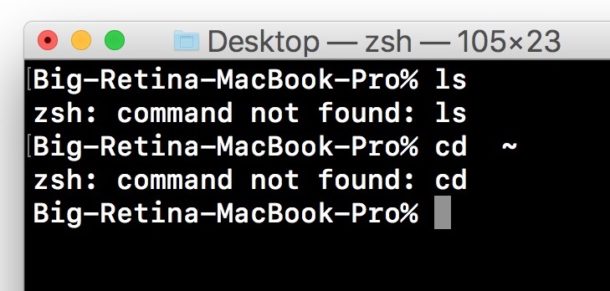

- #MAC OS COMMAND LINE MOVE FILES AND CHECK FOR ERRORS HOW TO#
- #MAC OS COMMAND LINE MOVE FILES AND CHECK FOR ERRORS MAC OS X#
These options work like chkdsk on Windows, checking for disk and file system errors and repairing them.
#MAC OS COMMAND LINE MOVE FILES AND CHECK FOR ERRORS MAC OS X#
If you ever lose your place and which directory you're in, type pwd (print working directory) and press Return to echo the current path. Mac OS X contains a variety of tools for repairing disk, partition, and file system errors. This is a very common command that will be used when working with the CLI. What it does: This command will change the directory that you're currently working with in the Terminal in order to execute other commands on a different directory, view the contents of a different directory or open a file in a different directory. SEE: macOS tune up checklist (TechRepublic Premium) 1. Open up the Terminal and follow some of the basic CLI commands below to grow your knowledge of how you can use command line interfaces on a modern Mac to get work done.

The Terminal will then respond after the command has been executed with any relevant information available (some commands may not echo back any output). The Terminal works by entering commands on the keyboard and pressing return to execute the commands. It works on XP, Vista, Windows 7, Server 2003 and Server 2008 operating systems. in any folder to start editing files in that folder. Restart the terminal for the new PATH value to take effect.
#MAC OS COMMAND LINE MOVE FILES AND CHECK FOR ERRORS HOW TO#
Below are few examples on how to use this command. Open the Command Palette ( Cmd+Shift+P) and type shell command to find the Shell Command: Install code command in PATH command. This can be used to get mac address for remote computers also. This app can be found inside of the Applications | Utilities folder (open a Finder window and press Command+Shift+U). Get mac address from command line (CMD) We can find mac address (physical address) of a computer using the command ‘ getmac ‘. Commands can be chained together to increase their usage, and more.Īnyone on a Mac built after Mac OS X's initial debut in 2001 can experience the command line interface through the Terminal app on their Mac through the UNIX-based shell. Some things in the Terminal allow users to work faster for basic or repetitive tasks. Over the years the Mac GUI has changed the way we work, but still, many people use the command line for its ability to control and automate tasks, or even configure features on the Mac that are only accessible through the CLI. The purists among us often prefer to use the CLI as a means of manipulating the computer and getting it to perform tasks instead of using a mouse to get things done. At one time the CLI was the only way to accomplish anything on a computer then, the CLI gave way to the graphical user interface (GUI) as the popularity of PCs increased. Terminal, or the command line interface (CLI), is considered by many to be the Holy Grail of computer management.


 0 kommentar(er)
0 kommentar(er)
